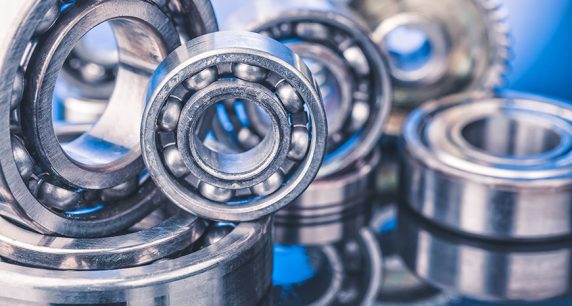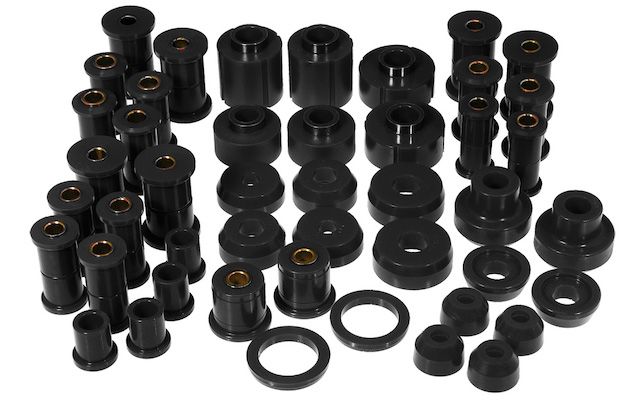Bushings Versus Bearings - What's The Difference?

What is a bearing? What is a bushing? Are they the same thing? If you’ve never seen either one, it’s hard to know. Bushings and bearings are very different parts. Let’s explore the differences between bushings and bearings.
WHAT IS A BUSHING?

A bushing is a small tube shaped rubber or polyurethane component. Some bushings have one or two metal sleeves. A bushing’s purpose is to provide some type of barrier between metal parts. To be more specific, a bushing:
- Isolates vibration
- Provides cushioning
- Allows minimal rotation
Bushings come in many different sizes and shapes. They are commonly used in the suspension. You’d find various bushings throughout your Ford, including:
- Control arm bushing
- Stabilizer bar bushing
- Sway bar link bushing
- Shift tube bushing
WHAT IS A BEARING?
A bearing is a more complex part than a bushing. Most bearings have several different components, including:
- A metal ring
- A roller element or steel balls located in the metal ring
- Supporting parts, i.e. a bearing cage, snap ring, retainer
A bearing allows parts to move freely. It connects to a rigid, non-moving part and a moving part. One part of the bearing remains fixed, while another part moves. This allows the moving part to move freely without friction.
HOW ARE THESE TWO PARTS DIFFERENT FROM EACH OTHER?

Bushings and bearings serve one common purpose, which is isolating two parts from each other. Yet, they differ in several major ways.
Bushings have a simpler design than bearings. They’re non-moving parts that enable movement. To be more specific, bushings allow relative motion by compressing slightly. They can also allow some rotation, but only about a quarter turn. The majority of the material used to make a bushing is a relatively soft rubber or polyurethane.
Bearings are moving parts that enable continuous rotation. Bearings have several different components, and are primarily made of steel.



